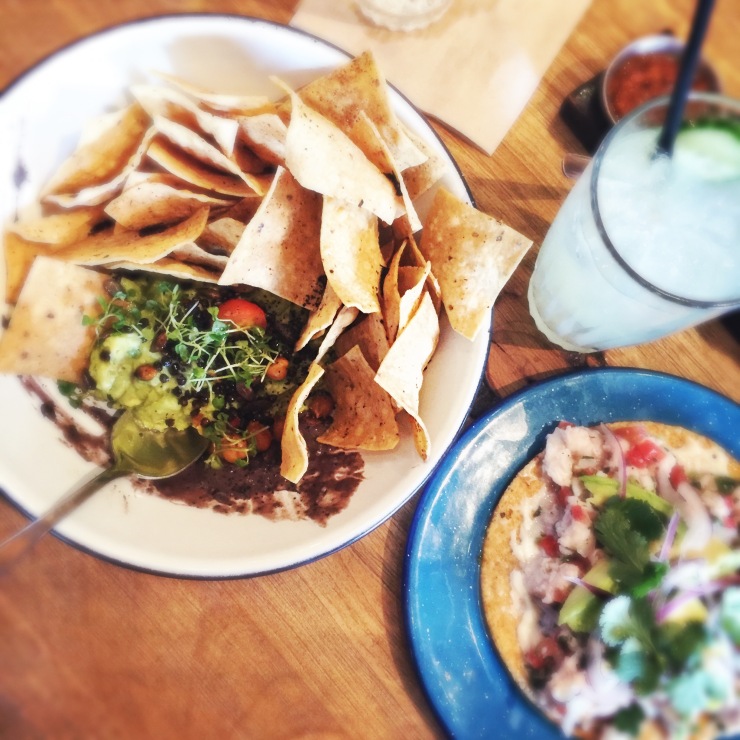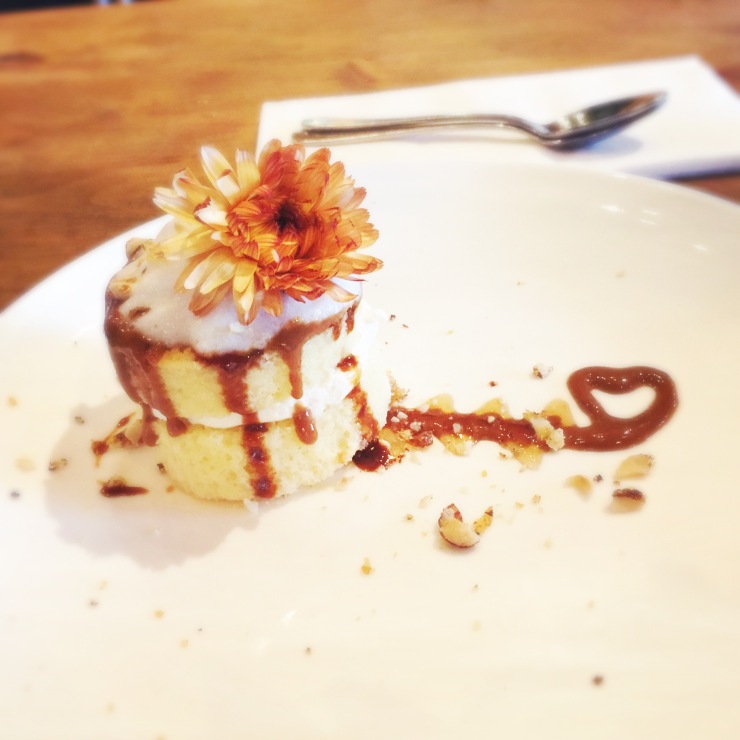What is Chilean cuisine? After spending a week in this South American country, I can answer in confidence: Seafood. Lamb. A riot of color, flavor and freshness. Seriously excellent wine, and Pisco, of course.
Across the board, everything that we sipped and savored during our week in Chile trumps the Chilean wine that’s being imported (mass market) to the States. It’s readily obvious that Chilean winemakers are onto something great. While it’s difficult to cull from so many moments of excellence, here are a few highlights from my recent time in Santiago:
FIRST: “Alt Chile” luncheon & wine tasting at Ambrosia Restaurant in Vitacura.
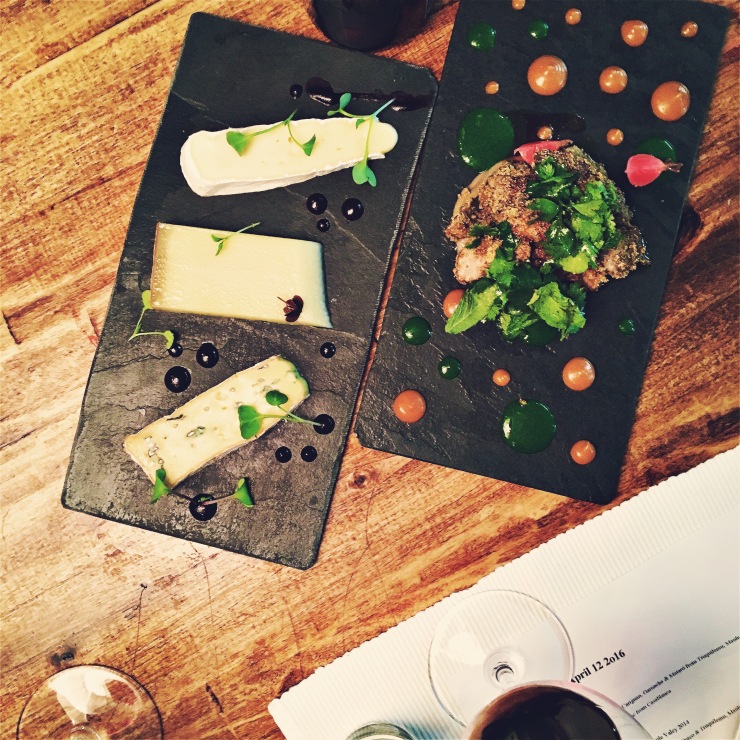
Derek Mossman, founder of Garage Wine Co. and MOVI, the Chilean Movement of Independent Vintners, led our intrepid expedition into the depths of Chile’s New Wine Movement, six head-to-head match ups including a pair of Pais from Sauzal, in Chile’s famous Maule Valley wine region, a pair of Garnacha from Caliboro, a pair of Cab Francs from the Maule Secano and a pair of Malbecs, “con” (with) and “sin” (without) music.
Yes, that’s right: The Tartufo Malbec and El Perseguidor Malbec — two 2013 Malbec Centenarios from San Rosendo Bio Bio Valley — were identical in every way except for the fact that one of the wines had music playing into its barrel during maturation and the other did not. The verdict: The “vino con musica” is comparatively more complex for its relatively young age, and the “vino sin musica” decidedly needs more time to age, but will likely ultimately develop the same complexity. All of this, in theory, due to the gentle vibrations of sound waves, which kept the juice inside the barrel moving? A fascinating proposition.
It goes without saying that the food pairings from Ambrosia, named one of Latin America’s 50 Best Restaurants 2015, were exceptional. Pictured above: The cheese course and also lamb sweetbreads lightly crusted with cornmeal for that textural crunch, as well as a vegetal, spring puree and manjar, Chile’s version of dulce de leche, with a similar caramel-y complexity just less sweet.
Also, pictured below, Ambrosia’s mousse de foie, one of the restaurant’s signature dishes and one of the more heady tastes I’ve had in recent memory. In texture, richness and presentation, it reminded me of nothing so much as a foie riff on crème brûlée, replete with that brittle, quick-fired top layer that cracks at the insistence of a spoon, allowing entree to luscious decadence underneath.

NEXT: Wine and Pisco in the so very charming Barrio Lastarria.
Santiago’s historic Barrio Lastarria is a jewel-box sized neighborhood that makes up for its diminutive stature by winning at just about everything else. Wedged between Santa Lucía Hill — lovely grounds that mark the precise location where the city of Santiago was first founded in 1541 — and Parque Forestal — an expansive park that’s also home to two of the city’s marquee museums — Barrio Lastarria is the proverbial heart of the city’s historic core.
Fittingly, Bocanáriz & Vinobar and Chipe Libre, Républica Independiente del Pisco, two of the neighborhood’s most beloved establishments (that also happen to be neighbors), could be described as projects of the heart: love letters to Chilean wine, spirits and cuisine.
If the luxury of time is not on your side, it’s relatively doable to visit both establishments during a single visit to Barrio Lastarria, starting with wine flights and tapas at Bocanáriz before moving on to Pisco flights and cocktails and more shareable deliciousness at Chipe Libre. A word to the wise: Come hungry — and thirsty.
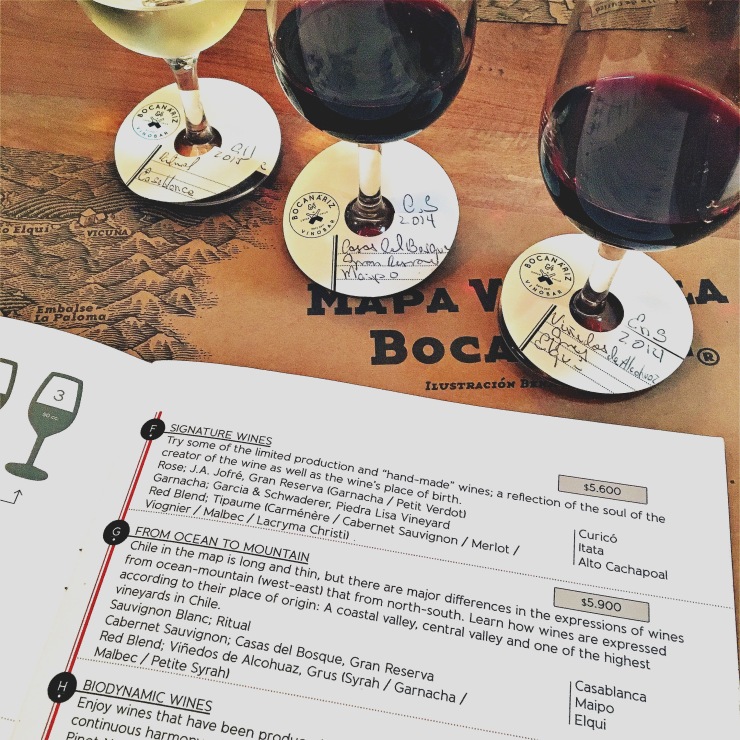
For anyone with even an inkling of passion for or curiosity about wine, a visit to Bocanáriz presents an excellent opportunity to learn about Chilean viticulture as well as sample any number of varietals; in addition to an extensive list of exclusively Chilean wine flights, every wine available by the glass can also be ordered as a 2 oz. “taste.” From the food we we tried, the mixed seafood ceviche with avocado and passion fruit stands out in memory. Overall, everything was delicious.
Next door (literally), a darker, moodier interior creates an entirely different ambiance, one that lends itself to sipping high-proof flights of Chile’s national spirit, Pisco, day or night.

I opted for a fruit-flavored Pisco Sour — dangerously delicious — as well as an order of centolla magallánica y panna cotta de palmitos con leche de tigre, mounds of fresh crab salad over hearts of palm panna cotta, and Chipe Libre’s take on “tiger’s milk,” the citrus-forward ceviche marinade that’s purported have hangover-curing properties. Hangover or lack thereof, yet another knock-out dish — yet again, Santiago continued to impress.
… Perhaps it was the preemptive leche de tigre, perhaps it was the anticipation of a new day, but I woke up energized and ready to go the next morning.
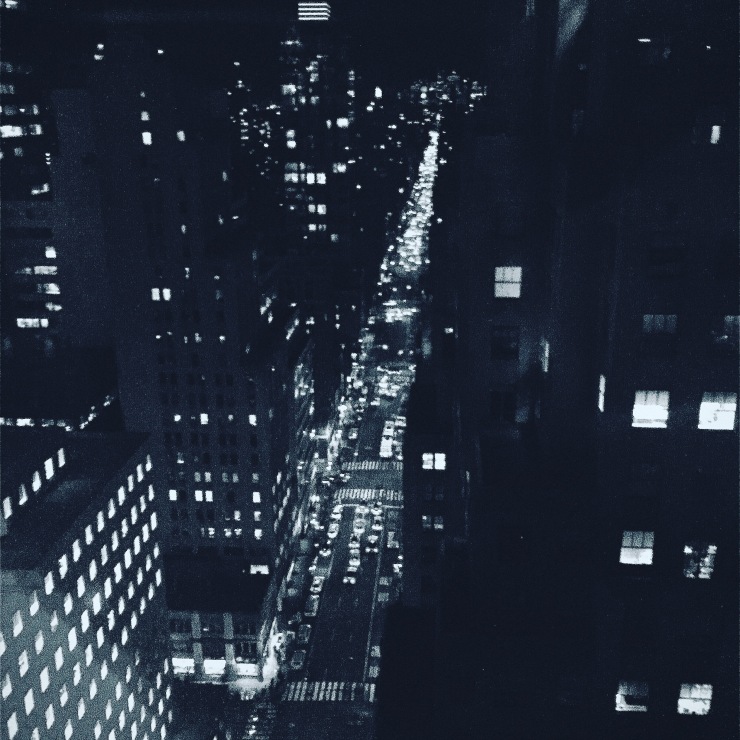

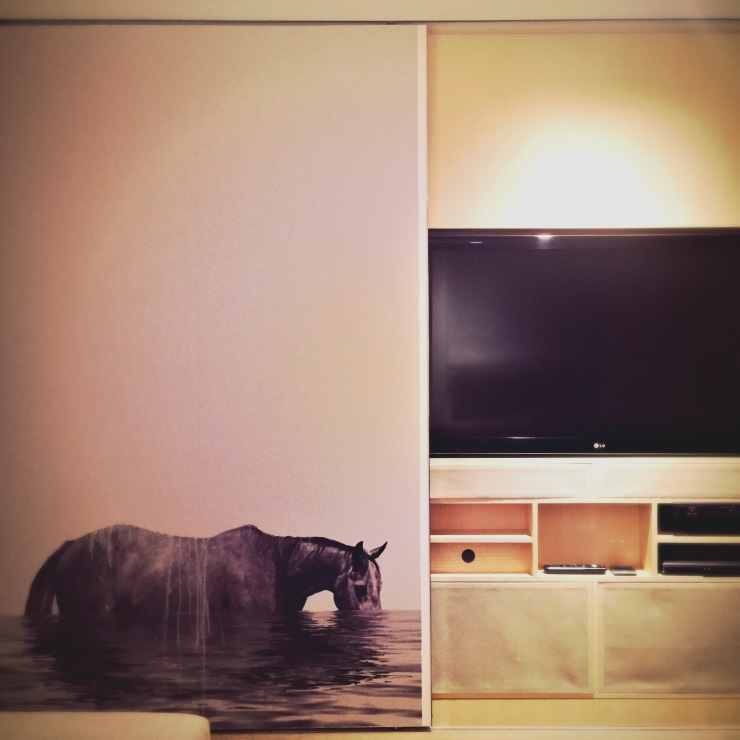

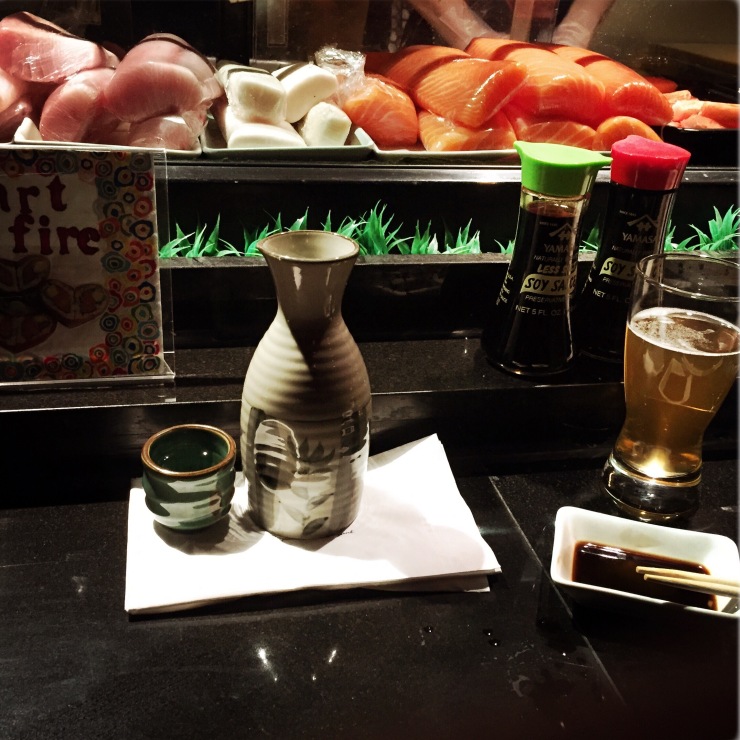
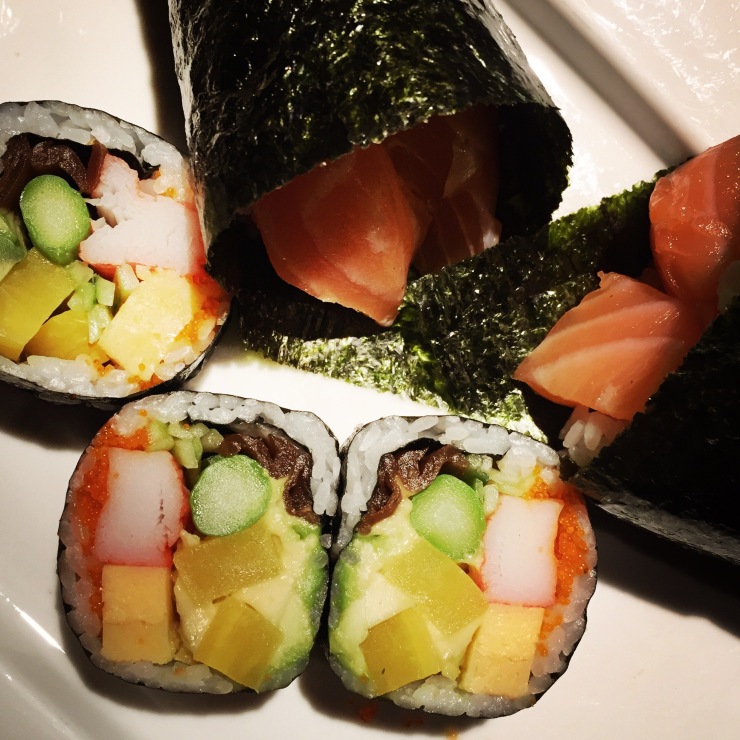
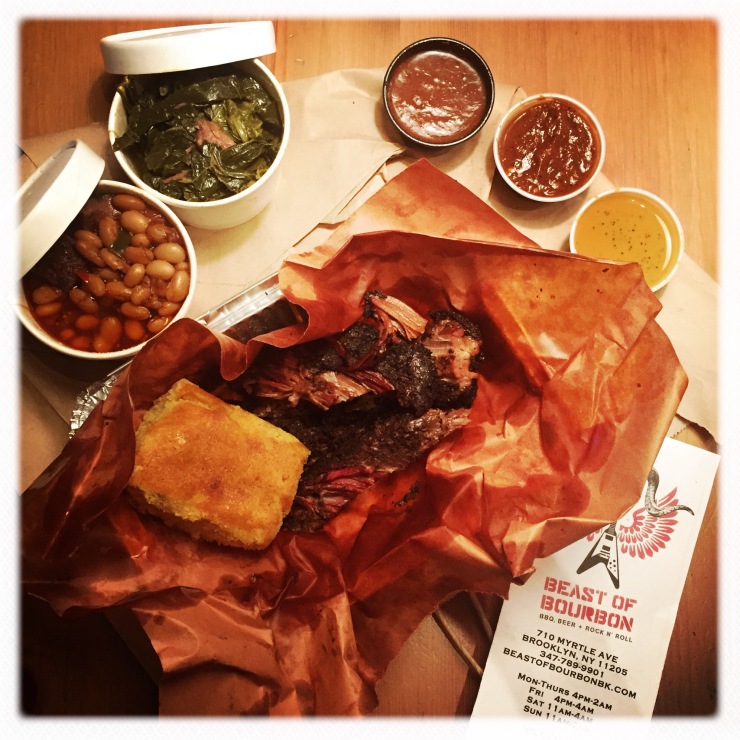






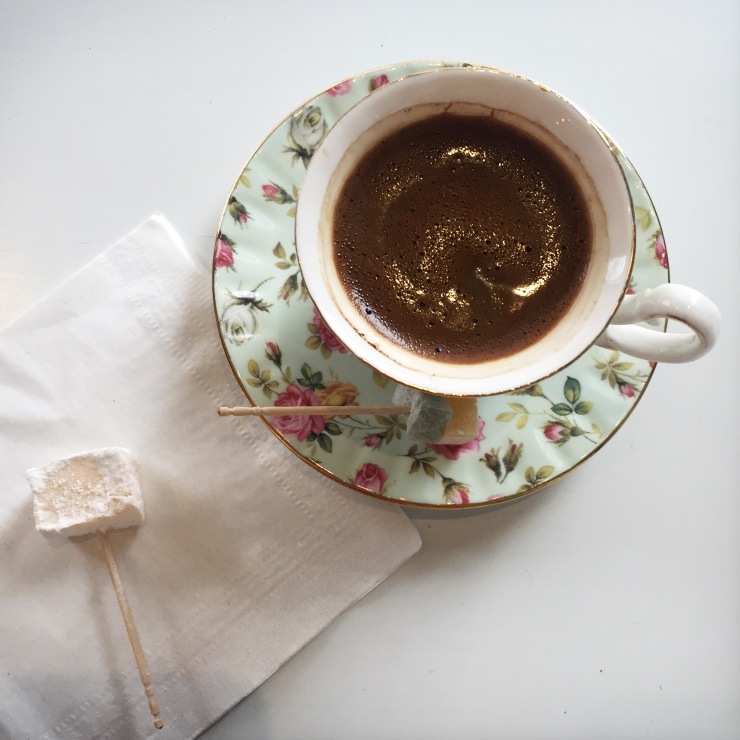









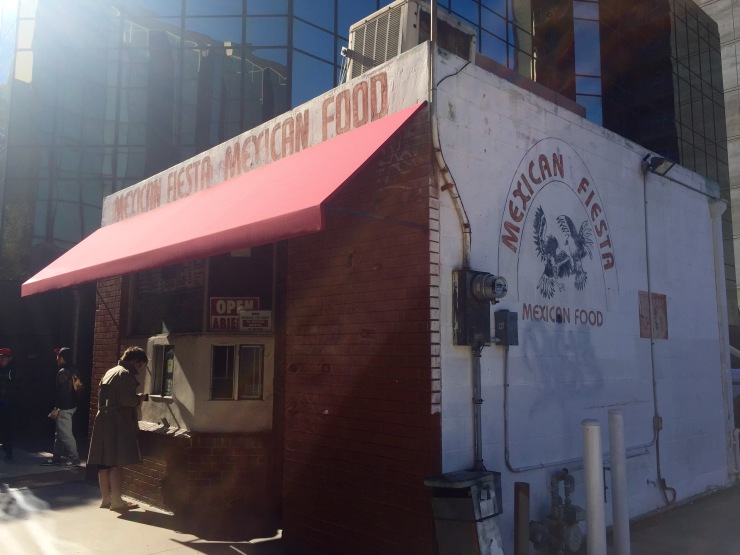
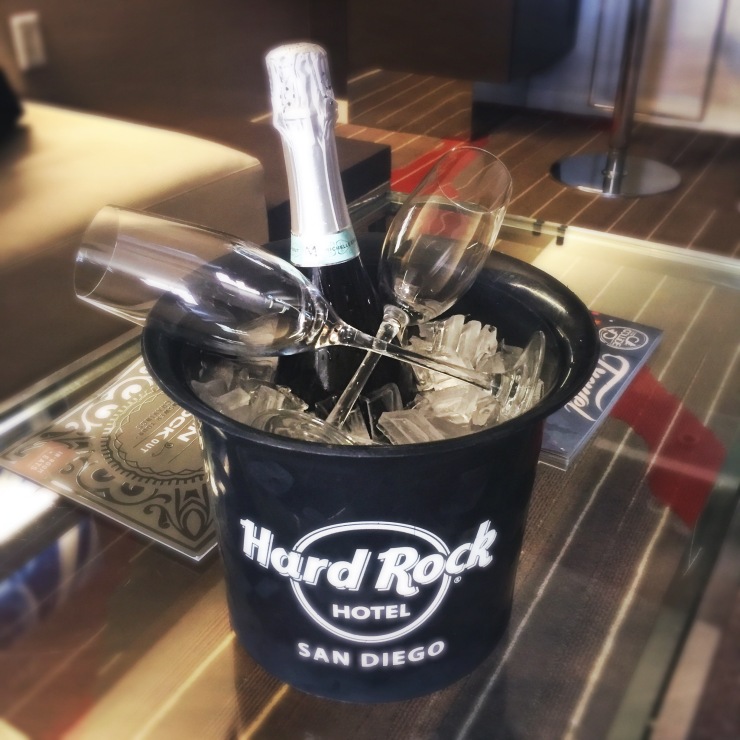
 Everything was absolutely delicious — if a bit disjointed. There was a Southern-ish element, a Pacific vibe, a trio of pastas, many small plates, a few cheeky nods to American “classics” a la corn dogs, General Tso’s, sweet potatoes and marshmallows and “Lamburger Helper.” I didn’t see a through line to the menu other than that it emerged from the depths of Richard Blais’ wildly creative culinary dreams. (Not that that’s a bad thing.) Impressive, still, that a nationally-known chef like Blais picked San Diego to open his first West Coast outpost over big sibs LA and SF. Strategically, it’s brilliant — he’s the first chef of that stratosphere to stake a claim here, and residents have welcomed him with open arms.
Everything was absolutely delicious — if a bit disjointed. There was a Southern-ish element, a Pacific vibe, a trio of pastas, many small plates, a few cheeky nods to American “classics” a la corn dogs, General Tso’s, sweet potatoes and marshmallows and “Lamburger Helper.” I didn’t see a through line to the menu other than that it emerged from the depths of Richard Blais’ wildly creative culinary dreams. (Not that that’s a bad thing.) Impressive, still, that a nationally-known chef like Blais picked San Diego to open his first West Coast outpost over big sibs LA and SF. Strategically, it’s brilliant — he’s the first chef of that stratosphere to stake a claim here, and residents have welcomed him with open arms.
